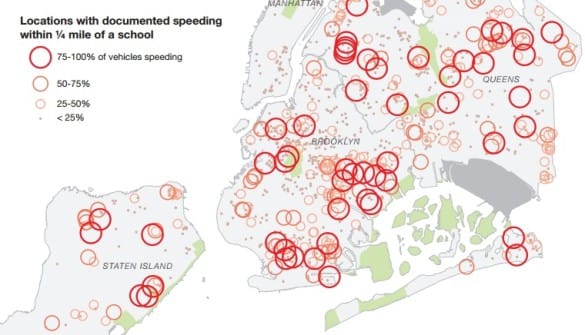Why The Roadblock On Life-Saving Speed Cameras? OPINION


By Andrew Gounardes, a candidate in the New York’s 22nd Senate District race. BAY RIDGE
In the wee hours of the morning on March 31st, the New York State Legislature and Governor Cuomo approved a $168 billion budget, and once again there was absolutely zero money allocated to increase the number of life-saving speed cameras in New York City. And there’s no good reason for it!
The State controls how many speed cameras the city can have and the locations and hours they can be in use. Since 2014, Albany legislators have capped the number at a measly 140, restricting their locations to streets that border school entrances, and limiting their operation to during school hours. New York City has 2,000 schools and 6,000 miles of streets. 140 cameras is grossly inadequate to meet our needs, and our neighbors are dying. 57 families in Brooklyn lost loved ones last year in traffic fatalities, more than any other Borough. 85 percent of traffic deaths happen at locations and times without camera enforcement.
But where speed cameras have been used, speeding has declined by 63 percent. Speeding is a leading cause of traffic deaths, which is why measures to reduce it are so important. Brooklyn residents are suffering the consequences of Albany’s failure to address traffic safety. In 2017, Brooklyn traffic fatalities rose by nearly 12 percent. Last month, 2 toddlers were killed and a pregnant mother was badly injured when a driver, whose car had been issued 8 tickets for speeding through school zones and blowing red lights, sped through a Park Slope crosswalk. How can legislators, in the wake of senseless tragedies like this one, do nothing?
As a member of the Pedestrian Safety subcommittee of Community Board 10 and an active member of Bay Ridge Advocates for Keeping Everyone Safe (B.R.A.K.E.S.), I’ve long studied this issue and advocated for Senator Golden to change his position. Golden has been hostile to the use of speed cameras since they were first proposed in New York. In 2012, Golden blocked funding in the Senate for a pilot program that would have installed cameras near just 40 city schools. A year later, funding for the first cameras was finally approved, though Golden was able to and chose to limit the program to just 20 schools. Last month, Golden suggested he’d be open to a proposal to double the number of speed cameras in school zones. However, he opposed lifting the restrictions that limit their operation to school days and hours, even though most traffic deaths happen outside of those parameters.
I recently took a tour of my neighborhood, visiting all 35 corridors and intersections in New York’s 22nd Senate District identified by the city’s Department of Transportation as “priority” locations, where there have been multiple instances of pedestrians injured and killed. I shared my pictures on Twitter and asked concerned residents to do the same. Afterward, I organized a community forum with about 40 of my neighbors to talk about pedestrian safety in our neighborhood. We talked for nearly two hours and shared our ideas, our stories, and our frustrations. Golden has been in Albany for 15 years, and in that time he’s personally been one of the biggest roadblocks to safer streets.
Perhaps Golden’s opposition to the program comes from his own driving experience. As a driver, Golden has a concerning pattern of multiple driving infractions. While 81 percent of vehicle owners who receive a speed camera violation are one-time offenders, Golden is himself part of the 19 percent who re-offend. His vehicle has been cited 10 times for speeding in school zones. His car has been cited for 37 infractions since 2013. Most upsetting is that, in 2005, his SUV struck a 74-year old pedestrian, who died months later.
It is not difficult to believe that someone who frequently breaks traffic laws would not want to write or support new or expanded traffic laws. If we want real solutions to pedestrian safety, we need leaders who are not themselves a part of the problem.
We welcome opinion pieces from all, as long as they matter to Brooklyn, and are about 500 words or so to be considered for publication. Please email your submission to Liena@bklyner.com.




